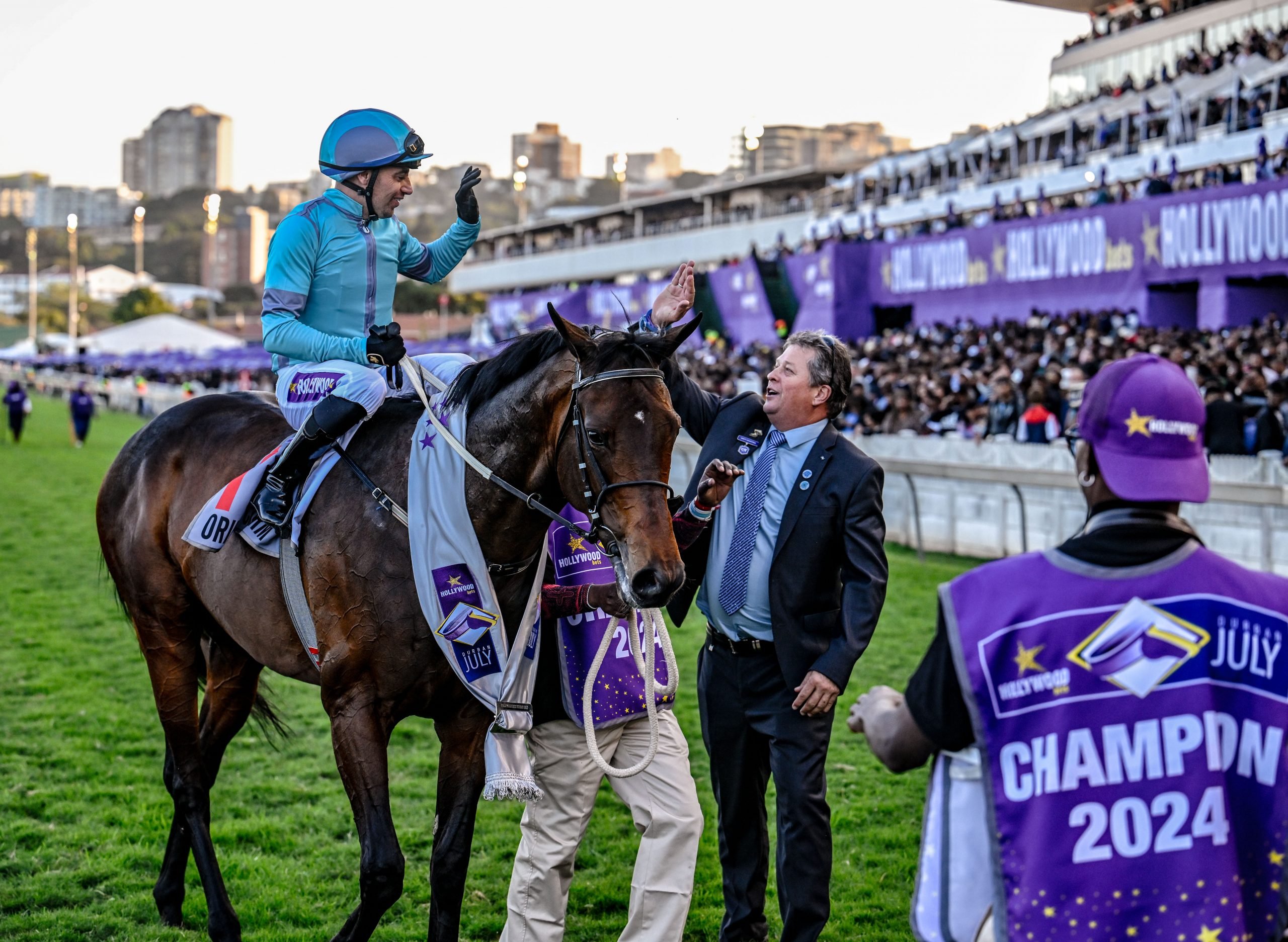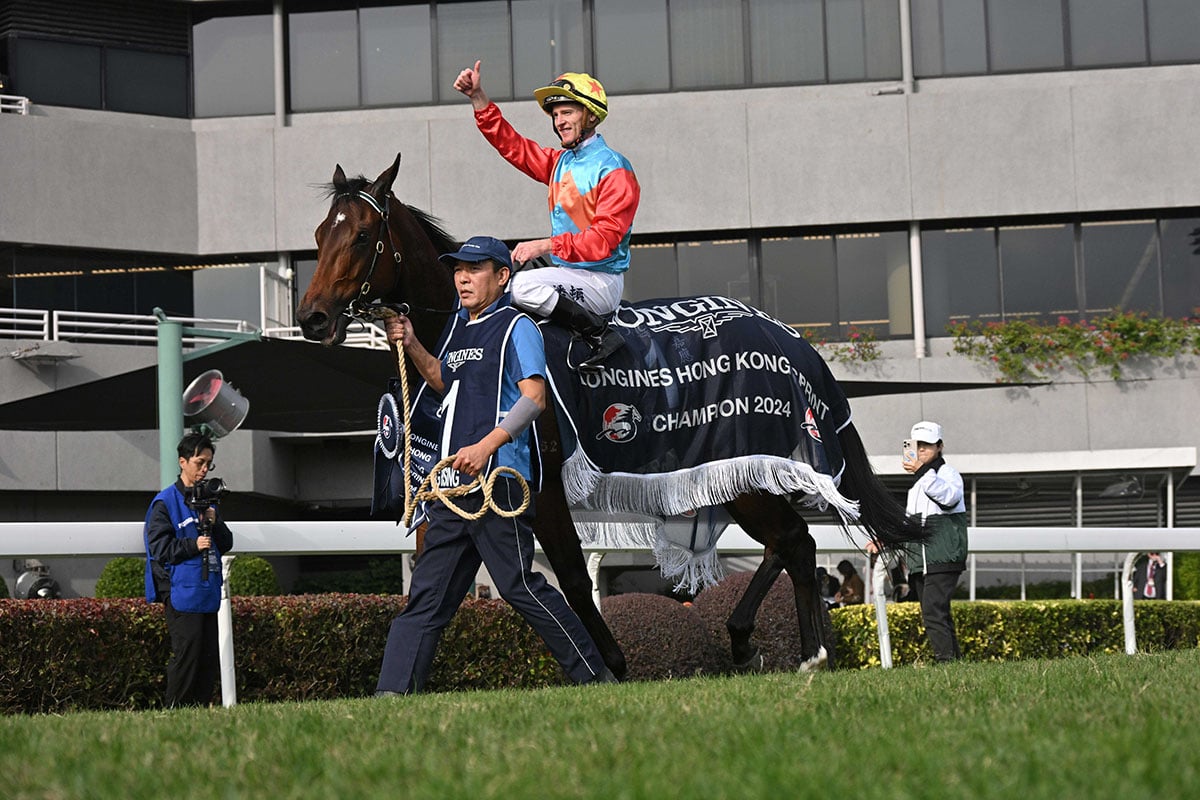The race that we know today as the Gr1 Investec Derby has a long and glorious history in South African racing. First run as the Western Province Derby in 1925 over 1 ½ miles for a stake of £600 including £200 donated by the Jockey Club of SA it was won by the filly Desert Born on the 7th March. Since then it has been run over different distances and at two racetracks. It was renamed the Cape of Good Hope Derby in 1946 and run at Kenilworth over a mile and a half. The race returned to Kenilworth in 1949 and has stayed there ever since, writes John Freeman.
It was the richest race ever staged in South Africa during its formative years. Only twice in history has the Derby not been run due to occurrence of Equine flu outbreaks and in 1987 the race date was postponed to later in the season when it was won by future champion Mark Anthony and in 2004 the race was abandoned entirely.
Despite the inaugural running being won by a filly, the Derby has not been kind to fillies since then. Just 3 members of the weaker sex have won the race in the last 50 years – Green Lass, Taima Bluff and Dog Wood.
The Cape Derby developed a significant link with the family that started the original event in England who were at the time mindful of the exploits of the stallion Asbestos II bred by the 17th Earl of Derby; Lord Edward George Villiers Stanley – the most influential breeder that ever lived (incl Hyperion, Swynford, Fairway etc).
Asbestos was a “fairly useful racehorse” in France and came to SA to be trained by the legendary Syd Garrett to win the Metropolitan Stakes (J&B Met today) under Stanley Amos. He was said to be a fine framed, athletic horse with a fiery temper. He eventually retired to the Birch Bros famous Vogelvlei Stud Farm in the Karoo where he was a sensational success and sired no less than 6 winners of the Cape Derby from his first 8 crops to race. He was infamous for killing his groom whilst at Vogelvlei. Full brothers Convalesce and Restore won consecutive running’s of the race in 1949 and 1950. They were sons of Asbestos II out of the Cockpen mare Recuperate.
The 1947 renewal of the event was possibly the most famous in that it carried the highest stake of any race ever. King George and the Royal entourage attended the meeting and presented the King’s Cup to the winner Menlo, trained by Syd Garrett and spectacularly ridden to victory by Stanley Amos who was a turf hero of his time. Report of the Royal visit can be found in Jean Jaffee’s book “They Raced to Win” – pages 111-112.
The Gr1 Cape Derby now sponsored by Investec was and is still today the most important pointer to South Africa’s two most prestigious and valuable races:- The Gr1 J&B Metropolitan Stakes and the Gr1 Vodacom Durban July Handicap. At least 17 winners of the Cape Derby have won either or both of the “July” and “The Met” many other winners and placed runners advertised their prowess to be worthy of international competition and were sold or raced abroad. Many champions have tasted defeat in this race including: King’s Pact, Jerez, Java Head, Yataghan, Over the Air, London News, Prince Florimund, Illustrador etc.
Remarkably five of the last seven horses to win the Investec Cape Derby have become Equus Champion Award winners – a significant indication of the type of horse associated with this prestigious race.
The first winner to be exported was the great Colorado King, the 1963 winner. He famously beat Majorca in the Derby shortly after she became the first 3yo filly ever to run in the Queen’s Plate and just after he’d set a new race record for the Cape Guineas. Trained by the master Syd Laird after his uncle Syd Garret passed away, it seemed impossible, just two furlongs from the post, that he could catch the flying filly but he beat her at the post. Colorado King went on to win the “July” as the shortest priced favourite in history and a total of 10 races in South Africa before being exported to America – purchased by W R Hawn, President of Del Mar race track for $15 000. In USA he won 6 of his 12 starts including the Hollywood Gold Cup (Gr.1) in 1964 and equalled world record for nine furlongs.
The siblings Top Gallant and multiple champion Sea Cottage (who famously survived being shot by a bookmaker before the “July” later that year), won the Derby in 1964 and 1966 respectively. Top Gallant was also sold to Mr Hawn after his win. Sea Cottage was the horse that captured the imagination of the public more than any other horse in the history of racing. He was owned and trained by Syd Laird. He won the Queen’s Plate on New Year’s day as a prep for the Derby and he won the Guineas Trial 3 weeks later, he failed in the Guineas due to a false pace but won the Derby at Kenilworth barely a month later by 2 lengths.
Subsequently the race was equally famous for delivering Mazarin (went on to win the July), Sword Dancer, a very fast horse who also beat Sentinel in the Queen’s Plate, Jamaican Music (also won the July and is apart from Sea Cottage, the only winner of the race to sire a winner – his son Stella Maris won in 1983), and in 1977 Politician achieved the impossible – he won the Derby by 5 ¾ lengths, then the July and the Met – all within less than a year. The first 3yo to win the Met and the Derby was Feltos in 1946.
In 1979 the race was run for the first time over 1 ¼ miles (2000m). Bold Tropic won over the new distance and by the widest margin ever recorded – 8 ½ lengths, thus proving Sir Mordaunt, protagonist of the shorter trip, right in that it would stimulate better racing. He was subsequently sold for a record price to USA where he continued his winning ways.
But it wasn’t until 1996 that a Derby hopeful would play a role in taking South African racing to a new international stage. This was the first time a “South African” was able to accept an invitation to race in international company in Hong Kong. History was being made when the strapping London News who was controversially “rolled onto” in the finishing stages of the Derby to be placed 3rd and subsequently won the July and the Met and then became the first horse to be exported under the EU ratified South African Export Protocol to give weight and a length-and-a-half beating to Group One competitors from Australia, New Zealand, Japan, the United Kingdom and the United Arab Emirates. That he did in record time over the extended ten furlongs of the Sha Tin main track after the most arduous air journey any horse had ever undertaken, reflects the professionalism and toughness that typifies the type of horse needed to win a Derby.
Recently Dynasty (2003) the fastest winner in over 20 years and Jay Peg winner in 2007 are the two brightest lights of the modern era. Drawn wide Dynasty won the race by 3 ¼ lengths as a precursor to his epic making victory in the July where he achieved the impossible – winning from draw 20. He retired to stud and became an award winning sire with his first crop to race with 4 Equus Awards to his credit including a Horse of the Year.
Jay Peg won in 2007 by the narrowest margin but at 123.25sec – the second fastest time since Dynasty. He subsequently failed in the KZN Guineas and the July and was exported to race in Dubai and Singapore where he won 3 Gr1 races, breaking the record in the Gr1 Dubai Duty Free and in the Gr1 Singapore Cup to become the most famous horse ever exported from SA and with a Timeform Rating of 126 the highest rated and highest earning horse ever bred here.
The Highlands based sire Jallad produced more winners of the race than any other sire since Asbestos II – his sons Grande Jete (bred by Veronica Foulkes won in 2001 was exported to UK), the ill-fated Rabiya won the race in 2005 and two Gr1 races after that but broke his leg in the July and Russian Sage won in 2008 and was sold to an American syndicate to race in Dubai.
A brief overview of the Cape Derby
1925. The race is first run as Western Province Derby
1930. The race is won by Windlass. The top filly of her generation, Windlass wins six races as a 3yo including four in a row.
1939. Taj Mahal wins the Derby and proves himself the best of his generation with a string of good performances. Connections elect to send the colt to Jo’burg, where he runs second in the SA Derby. Taj Mahal proves a versatile sort, who wins a six furlong handicap later in the season, giving weight to older horses.
1942. Forest Fire gives his sire Asbestos II his first Derby winner. Remarkably, sons of Asbestos II win five consecutive Derbies – 6 in total!
1946. Race is run under the name ”Cape of Good Hope Derby”. The Birch Bros are responsible for breeding the first 4 home in the race, a truly stunning achievement. The winner, Feltos, becomes the first horse to win both the WP Guineas and Cape Derby.
1949. The Derby is moved to Kenilworth permanently.
1950. Restore emulates his full brother Convalesce by winning the Derby. Convalesce won the previous year.
1976. Gigantic becomes the first horse to win the Derby over its new distance of 2000 meters. Gigantic proves a tough and versatile campaigner, winning both the Gold Bowl and Holiday Inns.
1993. Eli’s Truth pulls off the Guineas/ Derby double downing top filly Vesta in the process. He is one of just four foals in his sire’s, Eli’s Star, first crop.
1999. Dog Wood is the most recent filly to win the race. Sadly, the Derby is the last start of Dog Wood’s all too brief career. She is retired to stud later in the season.
2003. Dynasty wins from draw 10 in the fastest time in the last 15 years. He goes on to win the July from draw 20 and is Equus Horse of the Year and Champion 3yo colt. He is retired to stud after an offer of R50m is rejected to send him to Dubai. His first crop make him the Equus Outstanding sire of 2010 and he becomes the first 3yo Horse of the Year in the
history of SA to produce a 3yo Horse of the Year from his first crop. This colt, Irish Flame, is part-owned by the MD of Investec who sponsor the Derby.
2006. The race is sponsored by Investec Bank for the first time. In a thrilling finish, original winner Money Bags is demoted to second, and Floatyourboat is awarded the race. The winner certainly merited disqualification, and Floatyourboat proves himself a classy performer, winning the Gr2 Merchants and finishing second to legendary stable
mate Pocket Power in the Queen’s Plate.








